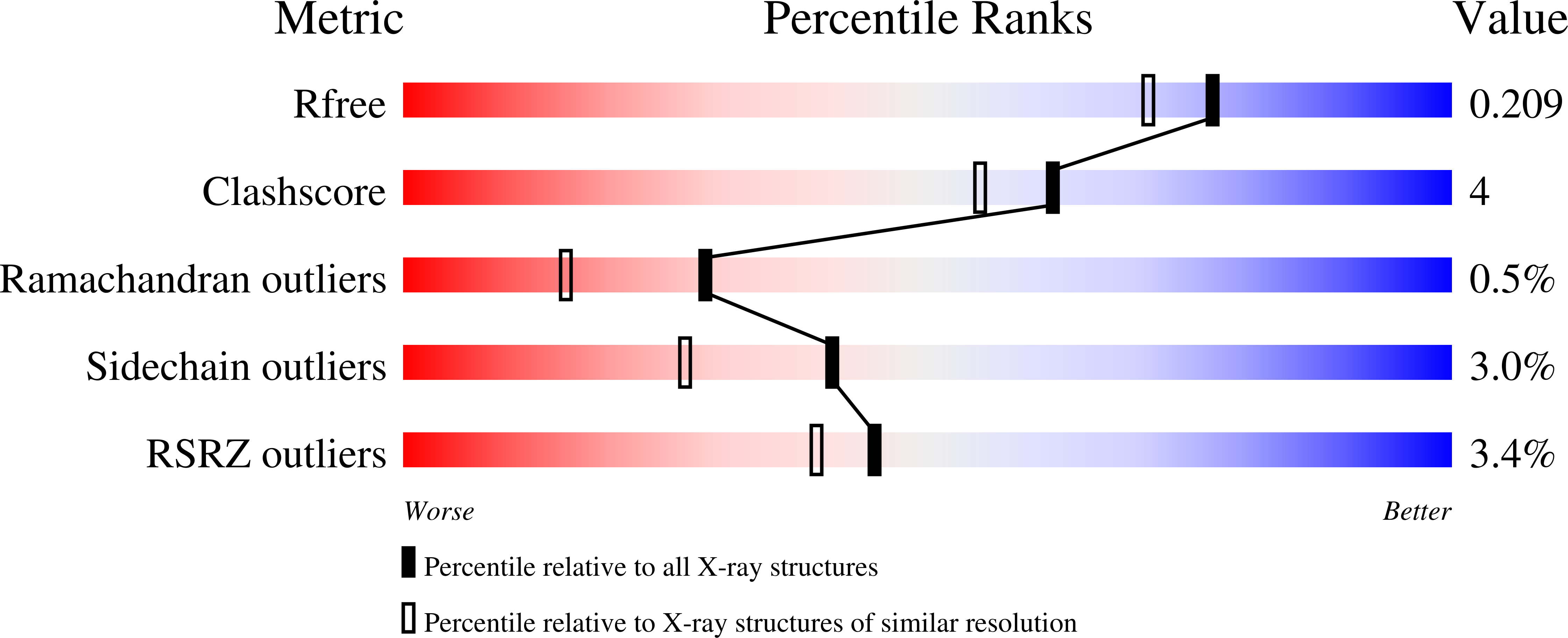Bovine cytochrome c oxidase structures enable O2 reduction with minimization of reactive oxygens and provide a proton-pumping gate
Muramoto, K., Ohta, K., Shinzawa-Itoh, K., Kanda, K., Taniguchi, M., Nabekura, H., Yamashita, E., Tsukihara, T., Yoshikawa, S.(2010) Proc Natl Acad Sci U S A 107: 7740-7745
- PubMed: 20385840
- DOI: https://doi.org/10.1073/pnas.0910410107
- Primary Citation of Related Structures:
3AG1, 3AG2, 3AG3, 3AG4, 8IJN - PubMed Abstract:
The O(2) reduction site of cytochrome c oxidase (CcO), comprising iron (Fe(a3)) and copper (Cu(B)) ions, is probed by x-ray structural analyses of CO, NO, and CN(-) derivatives to investigate the mechanism of the complete reduction of O(2). Formation of the derivative contributes to the trigonal planar coordination of and displaces one of its three coordinated imidazole groups while a water molecule becomes hydrogen bonded to both the CN(-) ligand and the hydroxyl group of Tyr244. When O(2) is bound to Fe2+a3 , it is negatively polarized (O2- ), and expected to induce the same structural change induced by CN(-). This structural change allows to receive three electron equivalents nonsequentially from Cu1B+, Fe3+a3, and Tyr-OH, providing complete reduction of O(2) with minimization of production of active oxygen species. The proton-pumping pathway of bovine CcO comprises a hydrogen-bond network and a water channel which extend to the positive and negative side surfaces, respectively. Protons transferred through the water channel are pumped through the hydrogen-bond network electrostatically with positive charge created at the Fe(a) center by electron donation to the O(2) reduction site. Binding of CO or NO to induces significant narrowing of a section of the water channel near the hydrogen-bond network junction, which prevents access of water molecules to the network. In a similar manner, O(2) binding to is expected to prevent access of water molecules to the hydrogen-bond network. This blocks proton back-leak from the network and provides an efficient gate for proton-pumping.
Organizational Affiliation:
Department of Life Science, University of Hyogo, 3-2-1 Kouto, Kamigohri, Akoh, Hyogo 678-1297, Japan.












































